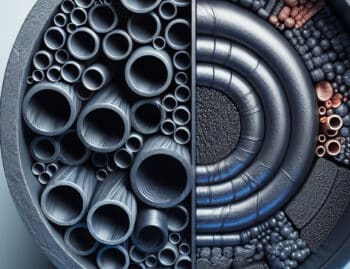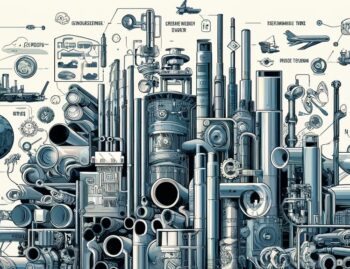The Difference
The difference begins with their names, which references how each type of steel is formed. As you might imagine, it directly relates to the temperatures that the steel was rolled in.
For hot rolled steel, it is rolled at temperatures of 1,000 degrees Fahrenheit and higher. Cold steel is rolled at much more comfortable temperatures, usually around room temperature. There must be a reason for these differences, though, so why the two separate processes?
Hot Rolled Steel
It is easy to identify hot rolled steel by the bluish tint that it often has to it from the rolling process. By being rolled in the extremely high temperatures, hot rolled steel loses many of the properties of cold rolled steel. This makes it a lower tolerance to outside pressures and makes it more malleable. Because of this increased flexibility, is far easier for hot rolled steel to take on a variety of shapes.
Due to its flexibility, hot rolled steel is highly sought out after as a structural component. This includes things like “I” beams and railroad tracks. Another popular use, due to its flexibility, is to craft it into sheet metal. While it is not as strong as the other, hot rolled steel is extremely useful for its ability to bend.
Cold Rolled Steel
While hot rolled steel is prized for being flexible and easy to work with, cold rolled steel does not undergo the same process that allows this particular feature. As a result, it is much stronger than the other and comes out of the rolling process about 20% harder.
Cold rolled steel also has the advantage of being used in jobs that require exact measurements, because it is far easier to craft this steel to exact specifications. These benefits do come with certain drawbacks, however.
Because it is so hard to move, cold steel is limited to only a few shapes: flat, round, etc. Still, they are just as popular as the hot rolled alternative. Cold rolled steel is typically used in bars and strips, virtually any basic shape that requires more strength than flexibility. While they are usually sold in smaller forms, they prove far more tolerant to outside factors than hot rolled steel.
Conclusion
These are the fundamental differences between hot and cold rolled steel. Each type of steel is better suited to some jobs than others, so it is important to know the advantages and weaknesses of each variation. By staying knowledgeable, any contractor will have the ability to ensure that the job is completed as efficiently and safely as possible.











